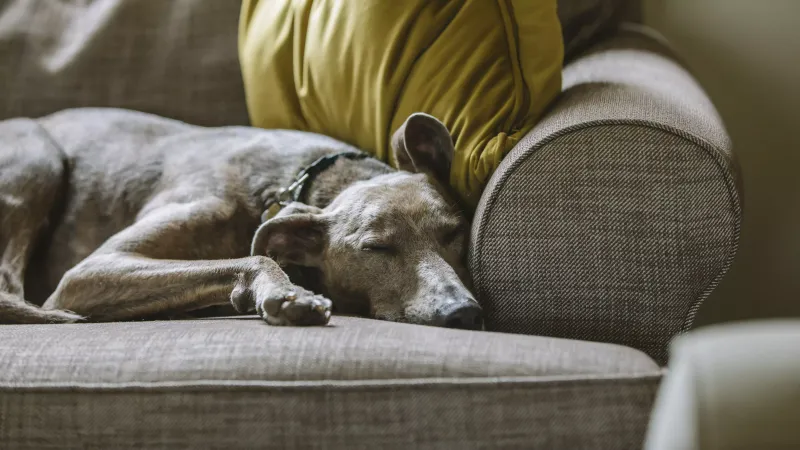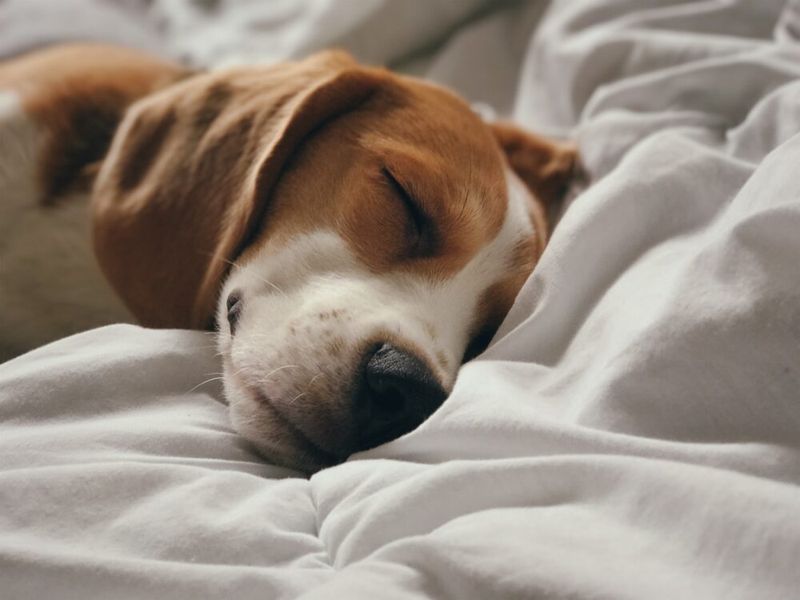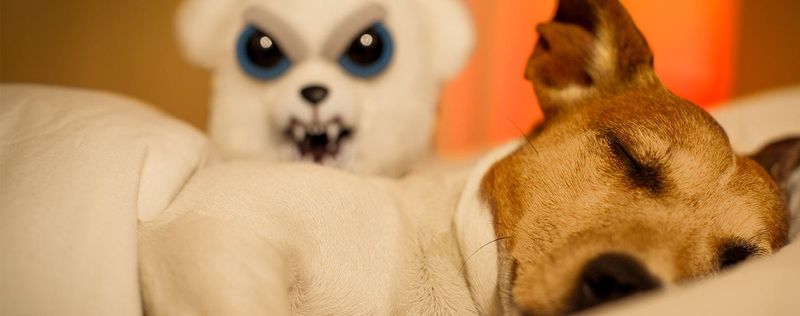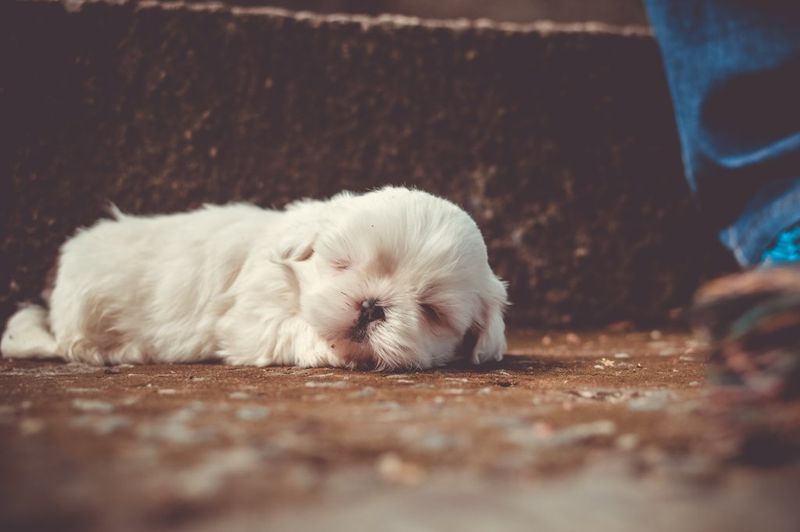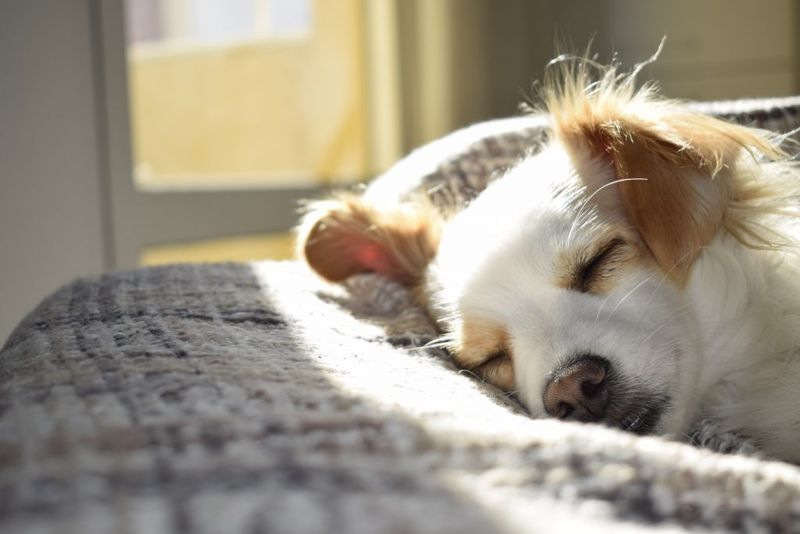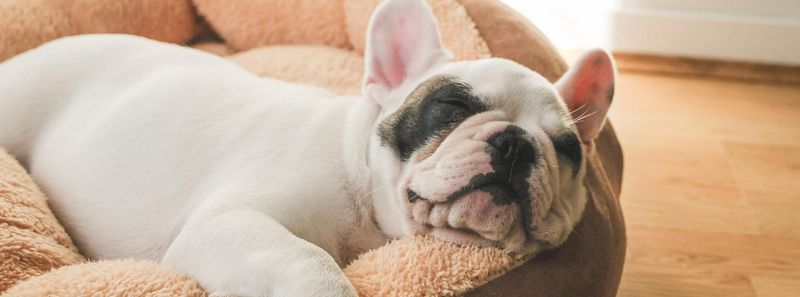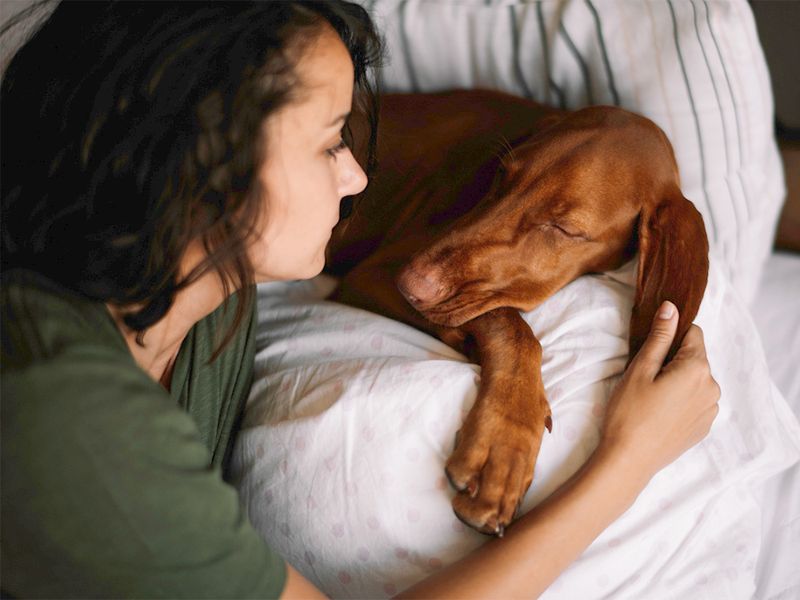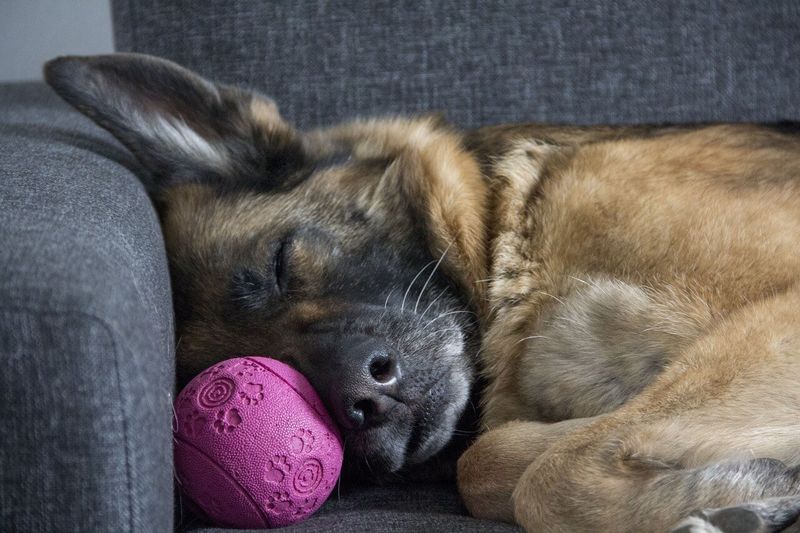Dogs share many traits with humans, including the ability to dream. These dreams can reveal fascinating insights into their lives and behaviors.
Do Dogs Really Dream?
Many pet owners wonder if dogs dream. Just like humans, dogs experience REM (Rapid Eye Movement) sleep, a stage associated with dreaming. During this phase, you might notice your furry friend twitching or moving its paws. The REM sleep cycle suggests that dogs do indeed dream. Interestingly, puppies and older dogs spend more time in REM sleep than middle-aged dogs. This might indicate that dogs dream about events from their daily lives, such as playing or chasing. So next time your dog lets out a joyful bark in its sleep, it might be reliving a fun day in the park.
What Do Dogs Dream About?
If you’ve ever watched a dog sleep, you’ve probably noticed little twitches and movements. These are signs that your dog is dreaming. Dogs often dream about everyday activities. They might envision chasing a ball or running through a field. Each breed may have specific dream patterns related to their instincts. For example, a hunting dog might dream of tracking prey. It’s a glimpse into their world, reflecting their daily experiences and desires. So when your dog twitches its paws in sleep, it’s likely dreaming of its favorite activities or adventures.
The Science Behind Dog Dreams
The study of dog dreams delves into fascinating science. Dogs have sleep cycles similar to humans, including REM phases where dreaming occurs. Neuroscientists have found that the brain wave patterns of dogs during sleep closely resemble those of humans. This connection suggests a shared evolutionary trait. The size and breed of a dog can impact how much they dream, with smaller dogs dreaming more frequently. Understanding these patterns provides insight into canine behavior and psychology. This scientific exploration opens up new ways to understand our pets’ emotional and mental lives.
Dogs’ Dreams and Memories
Dreams in dogs may play a role in memory processing. Just as humans use dreams to consolidate memories, dogs might do something similar. When a dog dreams, it could be sorting through the day’s events, reinforcing what it learned. Studies have shown that dogs can remember commands better after a good night’s sleep. This memory consolidation in dreams may enhance their learning abilities. By dreaming, dogs might be organizing their thoughts and solidifying new skills or behaviors. It’s a reminder of the sophisticated mental processes happening inside their sleeping minds.
Do Dogs Have Nightmares?
It’s not uncommon for dogs to experience nightmares. If you’ve noticed your dog whimpering or acting anxious in its sleep, it might be having a bad dream. Nightmares in dogs can stem from stress or traumatic experiences. They may relive moments that caused fear, such as a storm or an encounter with another animal. While it can be distressing to watch, it’s a natural part of a dog’s sleep cycle. Comforting your pet when it wakes up frightened can help ease its anxiety. Like humans, dogs need time to process their fears, even in dreams.
The Role of Age in Dog Dreams
Age plays a significant role in how dogs dream. Puppies tend to dream more frequently because their brains are processing vast amounts of new information. As they grow, the frequency of dreaming may change. Older dogs, too, spend more time in dream-filled sleep than middle-aged ones. Their dreams might reflect a lifetime of memories and experiences. The varying dream patterns across different life stages offer insights into a dog’s mental and emotional development. Observing these patterns helps owners understand and empathize with their aging pets.
Common Movements During Dog Dreams
During a dog’s dream, you might notice subtle movements like twitching paws or quivering whiskers. These involuntary actions are akin to human sleep movements, reflecting what’s happening in the dream. Dogs might simulate running or playing, expressing their excitement through small gestures. Such movements are signs of a healthy dream cycle and provide a window into their dream experiences. While it’s normal to observe these actions, excessive movement might indicate a sleeping disorder. Understanding these nuances helps in interpreting a dog’s dream state and ensuring a restful sleep.
Do Dogs Dream in Color?
The question of whether dogs dream in color is intriguing. While dogs don’t see the full spectrum of colors like humans, they are not entirely colorblind. Dogs perceive a limited range of colors, mainly blues and yellows. This suggests that their dreams could also reflect this color perception. A dog’s dream world might include these hues, adding a layer of vibrancy to their nocturnal adventures. Although the exact nature of their dreams remains a mystery, the possibility of color adds depth to our understanding of canine imagination and sensory experiences.
Dream Patterns in Different Breeds
Dream patterns in dogs can vary by breed. Some breeds, known for their intelligence and activity, may have more vivid dreams. For example, Border Collies, known for their herding skills, might dream of guiding sheep. Labrador Retrievers could envision fetching games. The diversity in breed-specific dreams reflects inherent traits and instincts. This variety offers a glimpse into how different breeds experience the world. By recognizing these patterns, owners can better appreciate their pets’ breed-specific characteristics and how they manifest in dreams.
Impact of Daily Activities on Dog Dreams
A dog’s daily activities significantly influence its dreams. If a dog spends the day playing in the park, it might dream about running and fetching. Conversely, a stressful day could lead to restless sleep filled with anxious dreams. The correlation between daily experiences and dreams highlights how deeply connected dogs are to their environment. By understanding this relationship, owners can enhance their pets’ sleep quality through positive experiences. Monitoring a dog’s daily activities offers insight into its dream content, revealing a connection between waking life and dream world.
Dogs’ Reaction to Waking from Dreams
When dogs wake from dreams, their reactions can vary. Some might appear disoriented, while others wake up lively and ready to play. This response depends on the dream’s nature—whether it was pleasant or unsettling. Observing a dog’s wakefulness offers clues about the dream experience. If a dog seems startled, it might have been dreaming of something frightening. A cheerful demeanor suggests happy dreams. Understanding these reactions helps in providing comfort and reassurance, ensuring emotional well-being. Owners play a role in easing the transition from dreamland to reality.
Significance of Dogs’ Sleep Positions
A dog’s sleep position can reveal aspects of its dream state. Dogs that sprawl on their backs might be in deep sleep, indicating relaxation and security. Those curled up might be conserving warmth and dreaming lightly. Each position correlates with different dream phases, providing insights into their comfort levels. By observing sleep positions, owners can gauge the depth and quality of their pets’ dreams. These positions serve as a visual cue, reflecting a dog’s emotional and physical state during sleep. It’s a unique way to connect with their nocturnal experiences.
Curious Case of Sleep Barking
Sleep barking is a curious phenomenon observed in some dogs. It happens during the REM phase, when dreams are most vivid. Dogs might bark softly or whimper, reacting to dream scenarios. This behavior is similar to sleep talking in humans and adds a layer of intrigue to canine dreams. Sleep barking indicates an active dream state, reflecting a dog’s engagement with its dream world. While usually harmless, excessive barking may require attention. Understanding this behavior provides a glimpse into a dog’s dream life, adding to the mystique of their nocturnal adventures.

